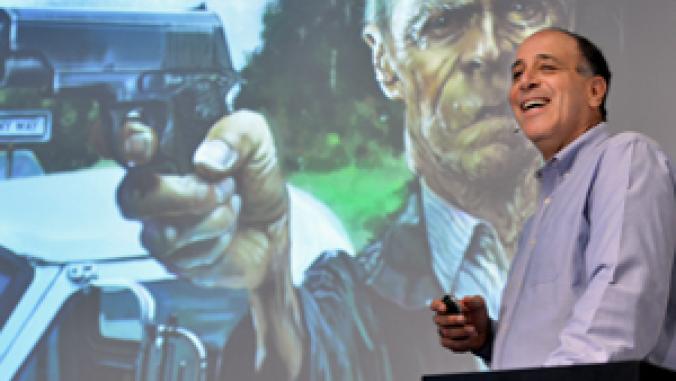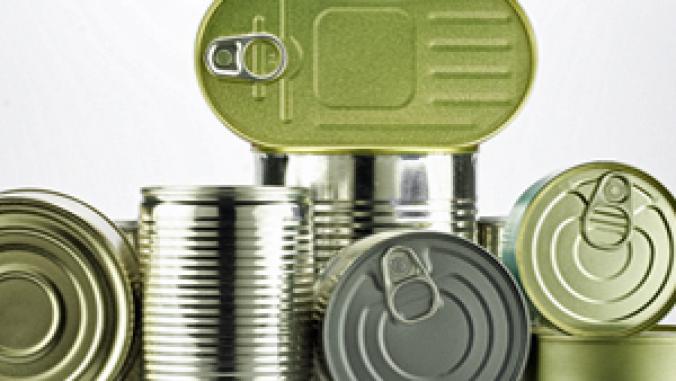BSR 2011: What a Bra, Beer & Bioscience Tell You About Green Innovation
<p>Many companies find the need to innovate challenging and the prospect of embedding sustainability into innovation even more so. But it doesn't have to be that way as Marks & Spencer, Carlsberg and Genecor showed at the BSR Conference.</p>

Many companies find the need to innovate challenging and the prospect of embedding sustainability into innovation even more so.
But it doesn't have to be that way as executives from Marks & Spencer, Carlsberg and Genencor showed at BSR's 2011 Conference by sharing their companies' experiences in making sustainability central to innovation.
Louise Nicholls, the head of responsible sourcing at Marks & Spencer, fascinated an audience with examples of products that were developed under Plan A, the company's ambitious roadmap for integrating sustainability throughout the business. She cited three: a carbon-neutral brassiere, a high-protein, low-cal diet meal and healthier milk.
The Marks & Spencer Carbon Neutral Bra
The green brassiere grew out of several M&S sustainability initiatives involving apparel, including work to make their content, the factories producing garments, their washing and their post-consumer life less of a strain on the environment. The product's development also spoke to the challenge of making sustainability targets and goals relevant to employees and their work.
"We were really struggling with carbon footprint and trying to relate the number to our teams," Nicholls said.
The relationship became clearer as the objective to reduce the footprint was viewed in context with the need to develop greener products in markets of opportunity and with the company's efforts in more responsible sourcing and manufacturing. From that thinking came the carbon-neutral bra, which is sewn in an energy efficient Sri Lankan factory that M&S built following its Plan A guidelines. The firm has offset the manufacturing process and shipping by planting 6,000 lime, mango and other trees in Sri Lanka (see Senior Writer Marc Gunther's article here).
"It's a very sexy product, it looks good, it's something people can get excited about," Nicholls said.
The bra, selling for £20 (about $32), has boosted sales for M&S, which had a 40 percent share of the brassiere market before introducing the green product, she said. The bra that was unveiled last spring is now part of a green lingerie line that includes carbon-neutral panties and a garter belt.
M&S and Greener Food
The retailer's Simply Fuller Longer line of high-protein, low-cal meals and its work to develop healthier milk emerged from Plan A efforts related to improving the nutritional value of food products. Simply Fuller Longer capitalizes on the fact that the meals laden with lean protein make people feel fuller longer and can help them lose weight. The meals also help consumers meet nutritional daily requirements for vegetables and whole grains.
Launched in January 2010, Simply Fuller Longer is now one of the two top-selling diet meal lines in the United Kingdom and people who follow the meal plan typically lose about 5 percent of their weight in a four-week period, Nicholls said.
Marks & Spencer's healthier milk initiative, which began last year, had multiple aims of addressing the fluctuating price of milk and developing a higher quality product in which the cost of the raw materials and production were better linked to the retail price. Working with dairy farmers and the University of Reading, the company found that cows became healthier and their milk had a lower fat content when the amount of saturated fat in their feed was reduced, Nicholls said.
Tackling the fat in the cows' feed brought the saturated fat content of their milk down by 6 percent and improved the well-being of the herd, which was calmer and had glossier coats as a result of their new diet, she said.
Carlsberg's Legacy of Innovation Through Science
Professor Jens Duus, director of the Carlsberg Laboratory, said innovation through science at his company is a legacy of its founder, Danish brewer J.C. Jacobsen. He refined the process of making Bavarian-style lager, then set about producing it with what was then state-of-art technology in a brewery that he established in 1847 just outside Copenhagen and named after his son.
Science and research were important to Jacobsen, Duus said. Jacobsen established the Carlsberg Laboratory in 1875 and in the next decade a leading scientist at the lab, Dr. Emil Hansen, developed a way to produce pure yeast. The breakthrough meant that brewers no longer had to rely on the vagaries of a key ingredient, which resulted in fluctuations in beer quality and in the instance of brews gone bad, "beer disease."
Instead of being patented, the information about the process was "given to brewers around the world," Duus said. The lab decided "we were not going to make it a trade secret and put it in a drawer," he said. "We needed to share it."
Science furthered the development of the company's product and the beer industry and can do the same for sustainability, Duus said. "If we want to do something significant, there has to be breakthroughs not just incremental progress," he said. "This is where science can make a difference."
Innovation and Sustainability at Genencor
Science and innovation are what Genencor does, said Director of Sustainability Beth Concoby. The biotechnology firm, a division of Danisco A/S and now part of DuPont, develops and manufactures industrial enzymes.
Concoby detailed the company's innovation process and its work in sustainability -- for its own operations and in developing products that enable customers to reduce the environmental footprint of goods they make.
As a supplier, the firm relies on strong collaborative relationships to create products that meet customers' needs, she said.
"Together we can accomplish what we can't accomplish alone," Concoby said, quoting the company's motto.





